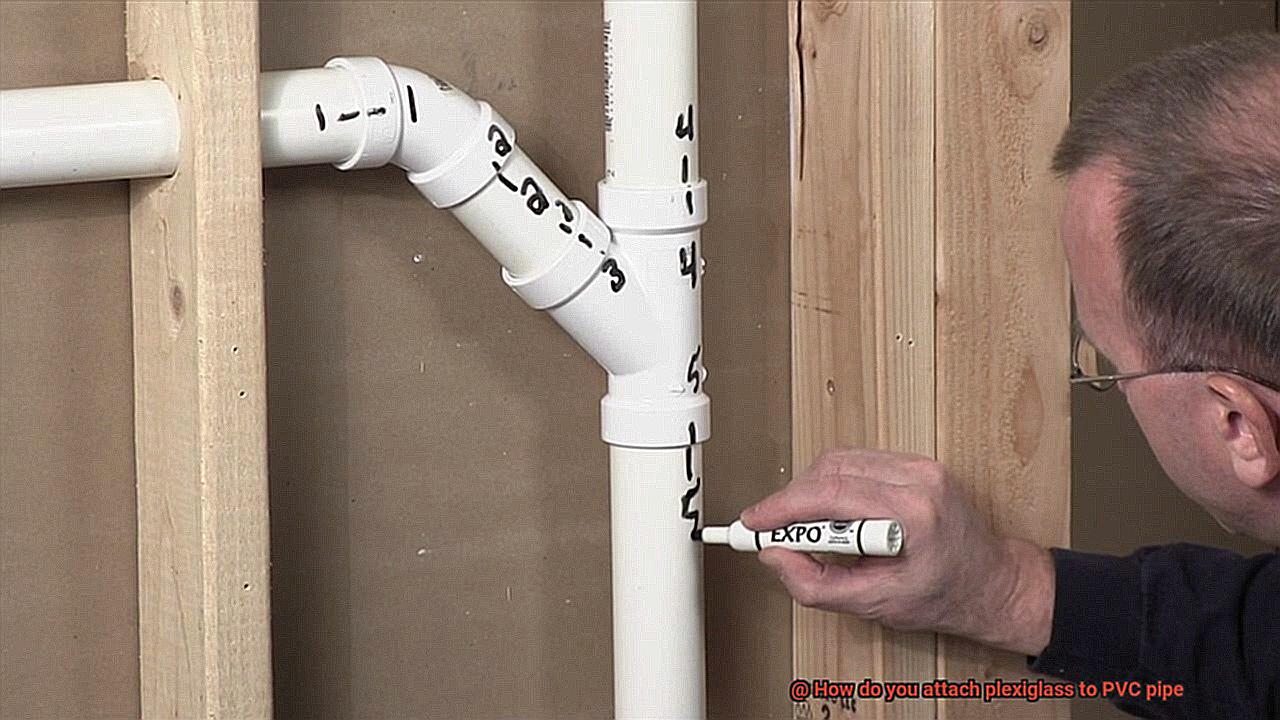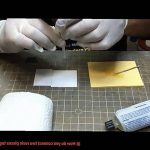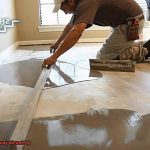Ready to learn how to attach plexiglass to PVC pipe? Well, you’ve come to the right place.
Whether you’re a DIY pro or just starting out, we’ve got some awesome tips for you. Plexiglass and PVC pipe are like a dream team when it comes to projects – they’re tough, versatile, and can handle anything you throw at them.
So grab your tools, put on your creative hat, and let’s get this party started.
Different Adhesive Options for Attaching Plexiglass to PVC Pipe
Contents
When it comes to attaching plexiglass to PVC pipe, finding the perfect adhesive is essential. Whether you’re embarking on a DIY project or a professional installation, understanding the different adhesive options available can make all the difference in achieving a strong and durable bond. In this blog post, we’ll delve into the various adhesive options for gluing plexiglass to PVC pipe, discussing their advantages and disadvantages.
Epoxy:
Epoxy stands out as a popular choice for bonding plexiglass to PVC pipe due to its exceptional strength and durability. With the ability to withstand water, chemicals, and temperature changes, epoxy is perfect for both indoor and outdoor applications. However, it requires thorough mixing before application and has a relatively long curing time, demanding patience and precision.
Cyanoacrylate Adhesive (Super Glue):
Cyanoacrylate adhesive, commonly known as super glue, offers a quick and easy option for attaching plexiglass to PVC pipe. It bonds rapidly and securely, drying clear for a clean and aesthetically pleasing finish. However, super glue can be brittle and may not withstand heavy loads or stress, making it more suitable for lighter applications.
Acrylic Cement:
Specifically designed for bonding acrylic materials like plexiglass to PVC pipe, acrylic cement is an excellent choice. This unique adhesive chemically melts the surfaces of both materials, creating a seamless and transparent joint that exudes professionalism. However, caution must be exercised while handling acrylic cement due to its toxic and flammable nature.
Double-Sided Adhesive Tapes:
For temporary or low-stress applications, double-sided adhesive tapes provide a quick and hassle-free solution for attaching plexiglass to PVC pipe. These tapes eliminate the need for additional tools or equipment, offering convenience and ease of use. However, it’s important to note that they may not provide the same level of strength and durability as other adhesive options, making them more suitable for short-term projects.
Using Solvent Cement
Imagine a project that requires a flawless union between plexiglass and PVC pipe. You need an adhesive that guarantees longevity and steadfastness. Enter solvent cement. In this comprehensive guide, we will delve into the intricacies of using solvent cement to securely join plexiglass and PVC pipe. From meticulous surface preparation to precise application techniques, we have you covered.
Step 1: Cleanliness is Paramount
Before embarking on your bonding journey, ensure that both the plexiglass and PVC pipe are impeccably clean. Employ a gentle detergent or cleaner to eradicate any traces of dirt, dust, or grease. Rinse thoroughly and allow the surfaces to dry completely. Remember, a pristine foundation is essential for a robust bond.
Step 2: Select the Ideal Solvent Cement
Not all solvent cements are created equal. Seek out a product specifically formulated for bonding PVC and plexiglass. These specialized formulations guarantee optimal adhesion and durability. Thoroughly peruse the manufacturer’s instructions to select the appropriate solvent cement for your project.
Step 3: Apply with Precision
With spotless surfaces and solvent cement in hand, it is time to unveil the magic potion. Utilize the brush or applicator included with the solvent cement to evenly coat both the plexiglass and PVC pipe surfaces. Ensure comprehensive coverage for a resilient bond.
Step 4: A Swift Dance of Bonding
Solvent cement dries swiftly, necessitating efficient work. Once applied, promptly unite the plexiglass and PVC pipe, ensuring impeccable alignment. Press them firmly together, allowing the solvent cement to weave its magic. Maintain this pressure for a few minutes to initiate the bonding process.
Step 5: Time is of the Essence
While solvent cement establishes an initial bond rapidly, it is crucial to allow for proper curing. Allocate at least 24 hours for the joined materials to attain maximum strength before subjecting them to stress or pressure. Patience is a virtue when aiming for a secure and enduring bond.
Using Epoxy
Today, we embark on a thrilling journey into the captivating realm of epoxy and its astonishing bonding powers. If you’ve ever pondered the secure attachment of plexiglass to PVC pipe, look no further. Brace yourself for the ultimate guide on using epoxy.
Cleanliness is Key:
Before delving into the world of adhesives, cleanliness reigns supreme. Ensure that both the plexiglass and PVC pipe surfaces gleam with pristine purity, devoid of dirt, dust, or grease. A gentle scrub with mild detergent and water or a swipe of rubbing alcohol will suffice.
Rough It Up:
Forge an unbreakable bond by roughening up the surfaces earmarked for epoxy application. Grab sandpaper or a coarse cloth and gently sand both the plexiglass and PVC pipe. This simple step enhances grip, ensuring the epoxy adheres like a tenacious glue (pun intended.).
Selecting the Right Epoxy:
Choosing the perfect epoxy for this specific application is paramount. Seek out a two-part epoxy or specialized epoxy putty designed exclusively for bonding plexiglass and PVC pipe. Carefully peruse the manufacturer’s instructions to ensure compatibility.
Application Techniques:
Precision reigns supreme when it comes to applying epoxy. Employ a dainty brush or applicator to achieve a thin, even layer on both the plexiglass and PVC pipe surfaces. Remember, less is more – a scant layer will work wonders in forging a robust and resilient bond.
Press and Hold:
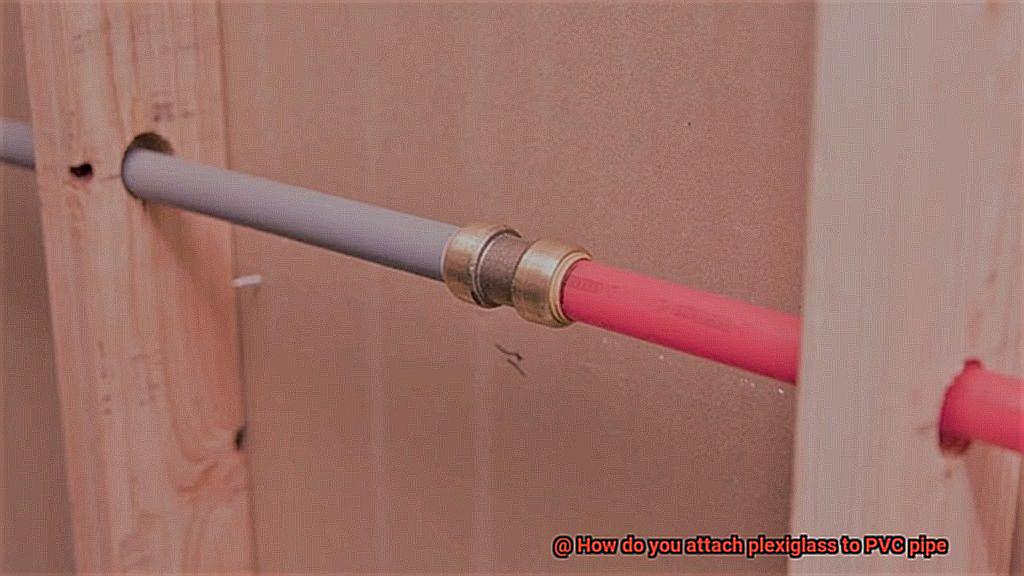
Post-epoxy application, meticulously align the plexiglass with the PVC pipe and exert some pressure. Firmly hold them together for several minutes, allowing the epoxy to solidify. This crucial step ensures an unwavering bond that defies all odds.
Curing Time:
Patience, dear reader, is the virtue of virtuosos. Respect the epoxy’s recommended curing time as indicated on the packaging. This allows the bond between the plexiglass and PVC pipe to strengthen, becoming an unyielding force. Rushing this step may compromise the bond’s integrity.
Reinforcement, if Needed:
Once the epoxy has cured, inspect the bond for any feeble spots or areas that could benefit from additional reinforcement. If necessary, apply a touch more epoxy to fortify the bond further. Remember, it’s always better to err on the side of caution.
Consider Environmental Factors:
Bear in mind that epoxy may not be universally suitable for all applications or environments. Take into account factors such as temperature, moisture levels, and stress when deciding to employ epoxy for attaching plexiglass to PVC pipe. When in doubt, seek counsel from seasoned professionals or experts in the field.
Using Acrylic-Based Adhesives
Look no further than acrylic-based adhesives. These remarkable adhesives offer a multitude of benefits that make them the go-to choice for this type of application.
First and foremost, acrylic-based adhesives provide a strong bond that ensures the plexiglass and PVC pipe stay firmly attached. No need to worry about your project falling apart – these adhesives have got you covered.
But it’s not just their bonding strength that sets acrylic-based adhesives apart. These adhesives are also highly compatible with both plexiglass and PVC pipe. They form a seamless connection, creating a reliable and durable bond between the two materials.
And let’s not forget about the ease of application. Acrylic-based adhesives typically come in liquid form, making them incredibly easy to work with. Simply grab a brush or an applicator, and apply an even layer of adhesive to either the plexiglass or PVC pipe surface – or both if you prefer. The liquid form allows for precise application, ensuring every nook and cranny is covered.
Additionally, acrylic-based adhesives offer resistance to moisture, chemicals, and UV radiation. This makes them ideal for outdoor applications where your attached plexiglass and PVC pipe may face the elements. Rest assured that your project will withstand the test of time, even in challenging environments.
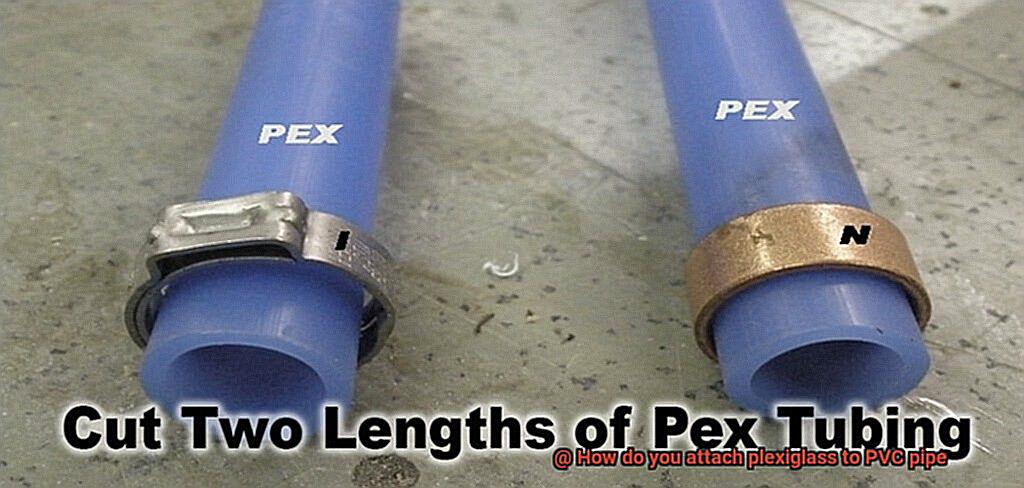
To achieve optimal results, it’s important to follow the proper surface preparation techniques. Cleanliness is key – wipe away any dust, dirt, or grease using a clean cloth dampened with isopropyl alcohol. This ensures a pristine surface for the adhesive to bond to.
Once applied, give the adhesive time to cure fully. Curing times may vary depending on the specific product and brand, so be sure to follow the manufacturer’s instructions for the best results. After curing, test the bond strength by giving it a gentle tug or applying light pressure. You’ll be amazed at the strength and resilience of acrylic-based adhesives.
Using Mechanical Fasteners
Look no further. In this guide, we’ll explore the world of mechanical fasteners and how they can be the perfect solution for achieving a strong and reliable connection. Say goodbye to worries about your project falling apart and let’s dive into the exciting world of joining plexiglass and PVC pipe.
Using Screws: The Perfect Fit
One of the most popular and effective methods for attaching plexiglass to PVC pipe is using screws. This method offers several advantages:
- Secure Connection: Screws provide a strong and secure connection between the plexiglass and PVC pipe, ensuring stability and preventing any accidental detachment.
- Pre-drilling Prevents Damage: By pre-drilling holes in both the plexiglass and PVC pipe, you can prevent cracking or splitting, ensuring the integrity of your materials.
- Even Pressure Distribution: Adding washers under the screw heads distributes pressure evenly, protecting the plexiglass from damage and maintaining its structural integrity.
- Gradual Tightening for Stability: Gradually tightening the screws while alternating between them ensures a tight and secure connection that will withstand various forces and stresses.
Using Nuts and Bolts: Strength Meets Versatility
Another reliable method for attaching plexiglass to PVC pipe is using nuts and bolts. This method offers its own set of advantages:
- Flexibility in Design: Nuts and bolts offer greater flexibility when it comes to design options. You can choose from various sizes and lengths, catering to your specific project requirements.
- Enhanced Strength: Nuts and bolts provide a high level of strength, making them ideal for applications with heavier loads or where additional reinforcement is needed.
- Easy Disassembly: Unlike screws, nuts and bolts allow for easy disassembly if any adjustments or repairs are required in the future.
Additional Reinforcement: Building for Durability
For added strength and stability, consider using brackets or corner pieces made of metal or plastic. These additional reinforcements can be attached to both the plexiglass and PVC pipe using screws or nuts and bolts. They provide extra support, especially in applications where the joint may be subjected to significant stress or movement.
Preparation is Key:
Before attaching plexiglass to PVC pipe, proper preparation is essential:
- Clean Surfaces: Ensure that both the plexiglass and PVC pipe are clean and free from debris. Wipe them down with a clean cloth dampened with isopropyl alcohol for optimal adhesion.
- Consider Weight and Load-bearing Requirements: When choosing mechanical fasteners, consider the weight and load-bearing requirements of your structure. Select screws or bolts that are appropriately sized and strong enough to withstand the intended use of the plexiglass-PVC pipe assembly.
Preparing the Materials for Attachment
Preparing the materials for attachment involves several crucial steps to ensure a strong and secure connection between plexiglass and PVC pipe. The first step is to gather all the necessary materials, including a plexiglass sheet, PVC pipe, adhesive or glue, a measuring tape, a pencil or marker, sandpaper or a sanding block, and a clean cloth. Having everything ready will save time and make the process smoother.
Once the materials are gathered, it is important to clean the surfaces thoroughly. Using a clean cloth, wipe down both the plexiglass sheet and PVC pipe to remove any dust, dirt, or debris. This step is essential for creating a better bond between the materials.
After cleaning, measure and mark the areas where you want to attach the plexiglass onto the PVC pipe. Precise measurements and clear markings are crucial for proper alignment during the attachment process.
To improve adhesion, lightly sand the marked areas on both the plexiglass sheet and PVC pipe. Use fine-grit sandpaper or a sanding block in a circular motion. After sanding, wipe away any residue with a clean cloth.
Choosing the right adhesive is vital for a strong bond between plexiglass and PVC pipe. Look for adhesives specifically designed for bonding these materials together. Ensure that the adhesive is suitable for both plexiglass and PVC pipe and provides a strong bond.
When applying the adhesive, follow the manufacturer’s instructions carefully. Apply a thin layer of adhesive on both the sanded areas of the plexiglass sheet and PVC pipe. Avoid using excessive amounts of adhesive as it can cause messy results and weaken the bond.
Allow the adhesive to become tacky or partially dry before joining the materials together. This step enhances adhesion and alignment. Once the adhesive is tacky, carefully align the marked areas of the plexiglass sheet with the PVC pipe and firmly press them together.
To ensure a secure bond, apply pressure on the attached parts for a few minutes. Clamps or any other suitable method can be used to hold the materials together firmly. Follow the adhesive manufacturer’s instructions regarding curing time for a complete bond.
Tips for Ensuring a Strong Bond
Look no further. In this article, we will provide you with essential tips to ensure a solid connection between these two materials. From surface preparation to adhesive selection, we’ve got you covered.
Cleanliness is Key:
Before attaching plexiglass to PVC pipe, it is crucial to clean both surfaces thoroughly. Use a mild detergent or rubbing alcohol to remove any dirt, dust, or grease. Starting with clean surfaces ensures better adhesion and a stronger bond.
Roughen Up for Better Grip:
To enhance bond strength, gently sand both the plexiglass and PVC pipe using fine-grit sandpaper. This roughens the surfaces, creating more area for the adhesive to grip onto. Remember not to apply too much pressure or sand too aggressively.
Choosing the Right Adhesive:
Selecting the correct adhesive is critical for a strong bond. Solvent-based adhesives like methyl methacrylate (MMA) provide quick-drying and powerful bonds. Structural adhesives, such as epoxy or polyurethane-based options, offer excellent strength and durability.
Apply Evenly:
When applying the adhesive, spread it evenly on both the plexiglass and PVC pipe surfaces that will come into contact. Use a brush or applicator to achieve full coverage while avoiding excess buildup that could create gaps in the bond.
Give it Time:
Allow sufficient curing time for the adhesive to set properly. The specific time can vary depending on the adhesive used, so refer to the manufacturer’s instructions for guidance. Avoid disturbing or putting stress on the bond until it has fully cured.
Reinforce if Needed:
After the adhesive has cured, inspect the bond for any signs of weakness. If necessary, consider applying additional adhesive or using mechanical fasteners like screws or bolts for added stability.
GDR5CLM8UFY” >
Conclusion
In conclusion, there are several adhesive options available to attach plexiglass to PVC pipe. You can choose from epoxy, cyanoacrylate adhesive (super glue), acrylic cement, and double-sided adhesive tapes. Each option has its own advantages and disadvantages, so it’s important to select the one that best suits your specific project requirements.
When using solvent cement, proper surface preparation is crucial. Cleanliness is paramount – both the plexiglass and PVC pipe should be free from dirt, dust, or grease. It’s essential to select the right solvent cement formulated for bonding PVC and plexiglass to ensure optimal adhesion. By applying the cement with precision and allowing sufficient curing time, you can achieve a strong and enduring bond.
Epoxy also requires similar surface preparation techniques. You need to clean and roughen up the surfaces before applying the epoxy. Choosing the appropriate epoxy designed for bonding plexiglass and PVC pipe is key. Apply a thin layer of epoxy evenly on both surfaces, align them correctly, and allow ample curing time for a secure connection.
If you opt for acrylic-based adhesives, you’ll enjoy a multitude of benefits. These adhesives offer strong bonding strength, compatibility with both materials, ease of application, and resistance to moisture and chemicals – making them ideal for outdoor applications.
For those who prefer mechanical fasteners like screws or nuts and bolts, they provide a secure connection between plexiglass and PVC pipe. However, it’s important to consider proper surface preparation by cleaning the surfaces beforehand and taking into account any weight-bearing requirements before attaching with mechanical fasteners.
Ultimately, whether you choose an adhesive or mechanical fasteners depends on your project needs.

